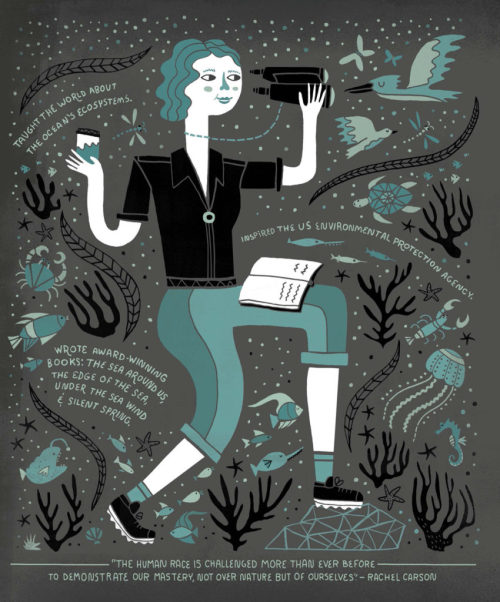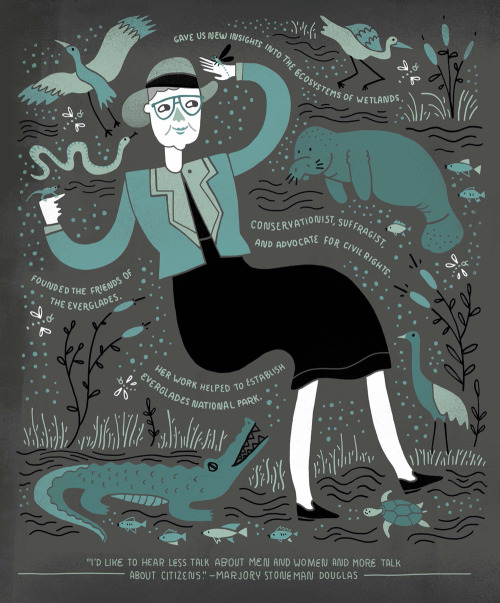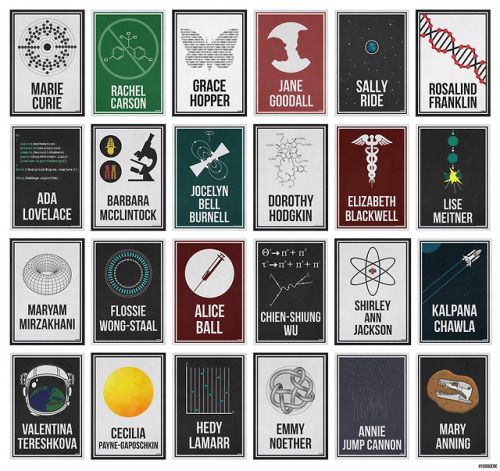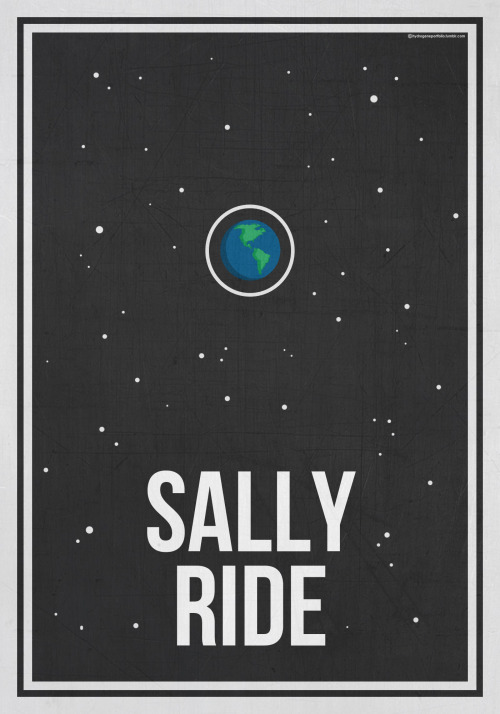#rachel carson
“ Anche se siete genitori che credono di non sapere granché della natura, potete fare comunque tanto per vostro figlio. Quando siete insieme a lui, ovunque vi troviate e qualunque siano i vostri mezzi, potete alzare lo sguardo al cielo: alla bellezza dell’alba e del crepuscolo, alle nuvole in movimento, alle stelle di notte. Potete ascoltare il vento, sia che soffi maestoso nella foresta o che intoni un ritornello a più voci attorno alle grondaie di casa o agli angoli del vostro palazzo; e, ascoltandolo, magicamente i vostri pensieri si libereranno. Potete sentire la pioggia sul viso, pensare al suo lungo viaggio e alle molte trasformazioni, dal mare, all’aria, alla terra. Anche se vivete in città potete trovare un luogo – un parco, un campo da golf – da cui osservare le misteriose migrazioni degli uccelli e il cambio delle stagioni. Insieme al vostro bambino potete riflettere sul mistero di un seme che cresce, si tratti anche di un solo seme piantato in un vaso di terra sul davanzale della finestra in cucina.
Esplorare la natura con vostro figlio significa principalmente diventare ricettivi verso ciò che vi circonda. Significa imparare di nuovo a usare gli occhi, le orecchie, le narici e i polpastrelli, riattivando i canali delle percezioni sensoriali ormai in disuso.
Per la gran parte di noi, la conoscenza del mondo deriva innanzitutto dalla vista; eppure ci guardiamo attorno con occhi così miopi da renderci parzialmente ciechi. Un modo per aprire gli occhi alla bellezza che di solito trascuriamo è domandarsi: “Che effetto mi farebbe se lo vedessi per la prima volta? E se sapessi che non potrei vederlo mai più?”.
Ricordo una notte d’estate in cui questo pensiero mi colse con forza. Era una notte chiara senza luna. Insieme a un’amica avevo raggiunto un promontorio piatto, una specie di isolotto circondato dalle acque della baia. Lì gli orizzonti sono linee remote, distanti, al confine con lo spazio. Ci sdraiammo a guardare il cielo e i milioni di stelle che risplendevano nell’oscurità. La notte era così tranquilla che riuscivamo a sentire la boa contro gli scogli distanti, oltre l’imboccatura della baia. Una o due volte giunse a noi la parola pronunciata da qualcuno sulla spiaggia lontana, trasportata attraverso l’aria limpida. Alcune luci brillavano nei cottage. All’infuori di quelle, non c’erano altri segni di vita umana: io e la mia compagna eravamo sole con le stelle. Mai mi sono sembrate più belle: il fiume nebuloso della Via Lattea che scorreva attraverso il cielo, la forma delle costellazioni che si stagliava luminosa e nitida, un pianeta fiammeggiante basso sull’orizzonte. Una volta, forse due, una meteora entrò bruciando nell’atmosfera della terra.
Mi venne di pensare che se una tale scena si fosse presentata solo una volta ogni secolo o per ciascuna generazione, il piccolo promontorio sarebbe stato gremito di visitatori. Invece la si può contemplare decine di notti ogni anno, e così le luci nei cottage rimangono accese e chi ci vive probabilmente nemmeno pensa alla bellezza sopra la sua testa. E poiché è uno spettacolo che può vedere tutte le sere, forse non lo vedrà mai. “
Rachel L. Carson,Brevi lezioni di meraviglia. Elogio della natura per genitori e figli, traduzione di Miriam Falconetti.
NOTA: La citazione è tratta da un articolo apparso per la prima volta nel 1956 sulla rivista “Woman’s Home Companion” con il titolo Help Your Child to Wonder e poi pubblicato in volume da Harper nel 1965 (col titolo The Sense of Wonder); è il racconto intimo delle escursioni fatte in compagnia di Roger, il piccolo nipote dell’autrice di tre anni, che in un’estate degli anni ‘50 le aveva fatto visita nella sua casa in riva all’oceano nel Maine.
Silent Spring by Rachel Carson: Author’s Original Copy, typescript [1962] is available in Rachel Carson papers at Yale University Library https://collections.library.yale.edu/catalog/15789737
Post link
Tawny owl living in a tree by the side of a heavily trafficked road in the Netherlands |soosseli
“Along the roads, laurel, viburnum and alder, great ferns and wild flowers delighted the traveler’s eye through much of the year…Then a strange blight crept over the area and everything began to change…Everywhere was a shadow of death."
Continued→https://unityinplurality.blogspot.com/2020/01/silent-spring.html
Post link
“No witchcraft, no enemy action had silenced the rebirth of new life in this stricken world. The people had done it themselves.” Such words from Silent Spring speak volumes. Anthropogenic climate change has befallen us. How do we rise from the ashes?
See→https://unityinplurality.blogspot.com/2020/01/silent-spring.html
Post link

Remember kids, mosquito lives are more important than human lives.
Happy Earth Day!
For all who are interested in keeping the planet safe and healthy, I recommend reading nonfiction (and a lot of it!). As a young person (who may not be immediately taken seriously) it will help you educate people on important topics in a way that is factual and sophisticated!
Here are some of my all time favorite nonfiction booksabout our planet, where the future is heading, and what we as a collective can do to take action!
- The Ends of The World by Peter Brannen (10/10!!)
- This is a FANTASTIC, funny, and highly informative book that came out this year about the historic effects of global warming, and where we might be heading as a result. It reads like a narrative, and gives a really interesting perspective on global warming from a historical, geological and biological perspective! In the words of Michael Pye “This is a book about rocks: a vivid, fascinating, sometimes horrifying book about rocks and the story they tell about all the past and future lives of our planet”.
- Things you’ll learn about: climate change, global warming, geology, the past 5 mass extinctions, paleontology, gigantic boney fishes, climate change, dinosaurs, and coral bleaching!
- Spineless by Juli Berwald (8/10)
- Spineless is an informative, beautifully written book about jellyfish and their effects on the oceans and ourselves. Berwald tells her personal journey studying jellyfish from start to finish in a way that is sometimes funny, sometimes sad, sometimes infuriating, and always incredibly interesting!
- Things you’ll learn about: jellyfish (literally everything about them, how to catch them, how to eat them, how to raise them, the big, the small, how they broke a nuclear reactor, eating habits, mating, EVERYTHING), global warming, the scientific community, japan, etc. etc.
- Silent Spring by Rachel Carson (10/10)
- A classic. Just a classic cornerstone environmentalism book. Everyone should read it sometime in their lives. Rachel Carson is a badass environmentalist who paved the way for female scientists and wrote a startling, unflinchingly honest book about the effects of DDT on wildlife (in the 1960s no less!). I love this book to pieces, please read!
- Things you’ll learn about: effects of pesticides on the environment, history, and the effects of widespread human ignorance
- the LOST species by Christopher Kemp (7/10)
- This book is incredibly unique! It focuses on the importance of natural history museums and collections, and how many species are discovered in the musty boxes and crates of huge natural history collections. The book is broken into small sections, each talking about a different species found in this way. Its full of surprises and narratives!
- Things you’ll learn about: endangered species, how natural history collections are built, how said collections are incredibly important and are falling into disrepair because no one cares about them, mass frog extinctions, and 30 ft. parasites that live in the stomachs of sperm whales!
Even if you’re Rachel Carson, your cat will sit on whatever you’re trying to read
(Alfred Eisenstaedt. 1961-2?)
Post link

![reve-generale: Silent Spring by Rachel Carson: Author’s Original Copy, typescript [1962] is availabl reve-generale: Silent Spring by Rachel Carson: Author’s Original Copy, typescript [1962] is availabl](https://64.media.tumblr.com/5c1102e4cebf12cb5f881f37647bb89d/032fa42d0e58cb8a-7a/s500x750/00912f92aa8a18fac3c2f5a68892fe3a5d69c743.jpg)













